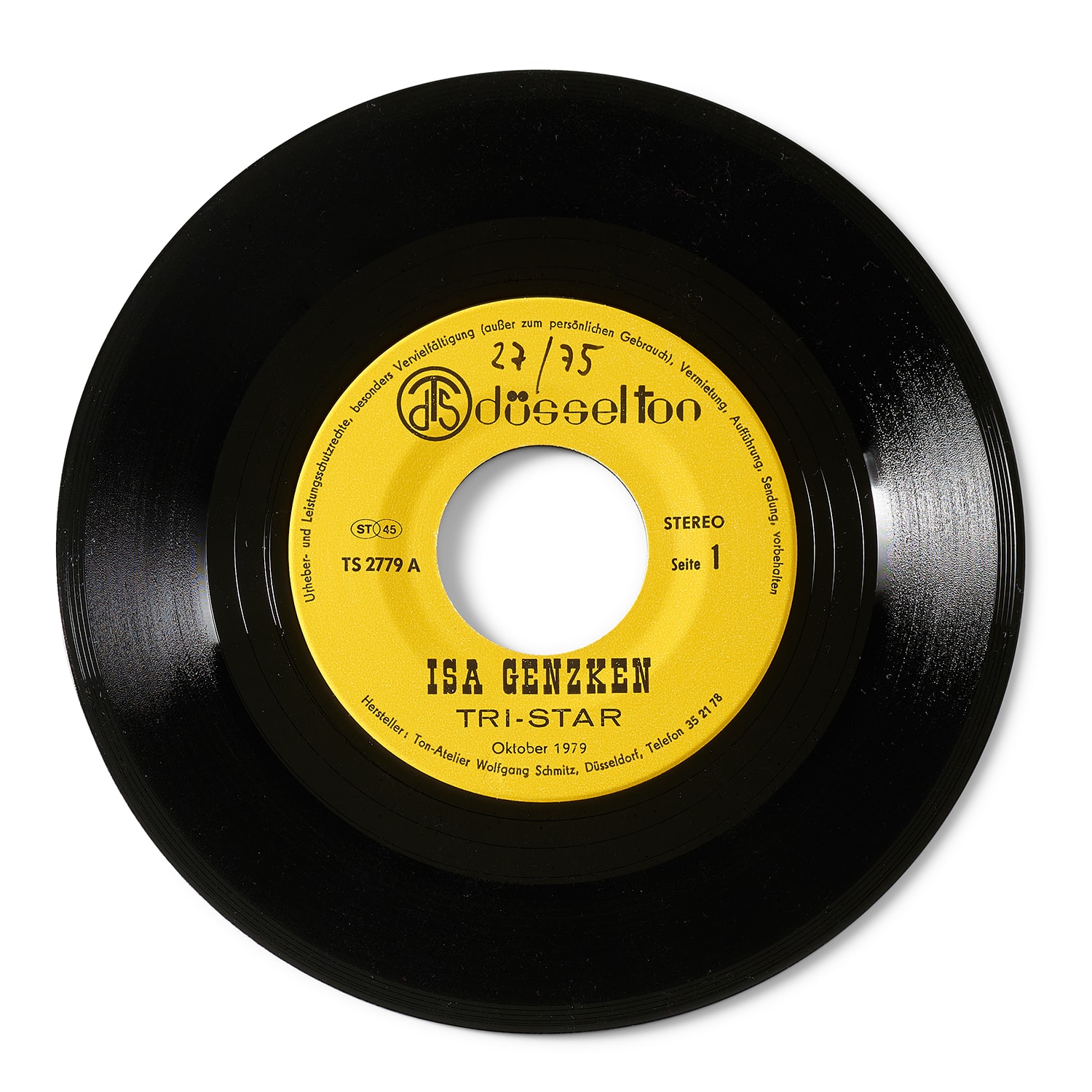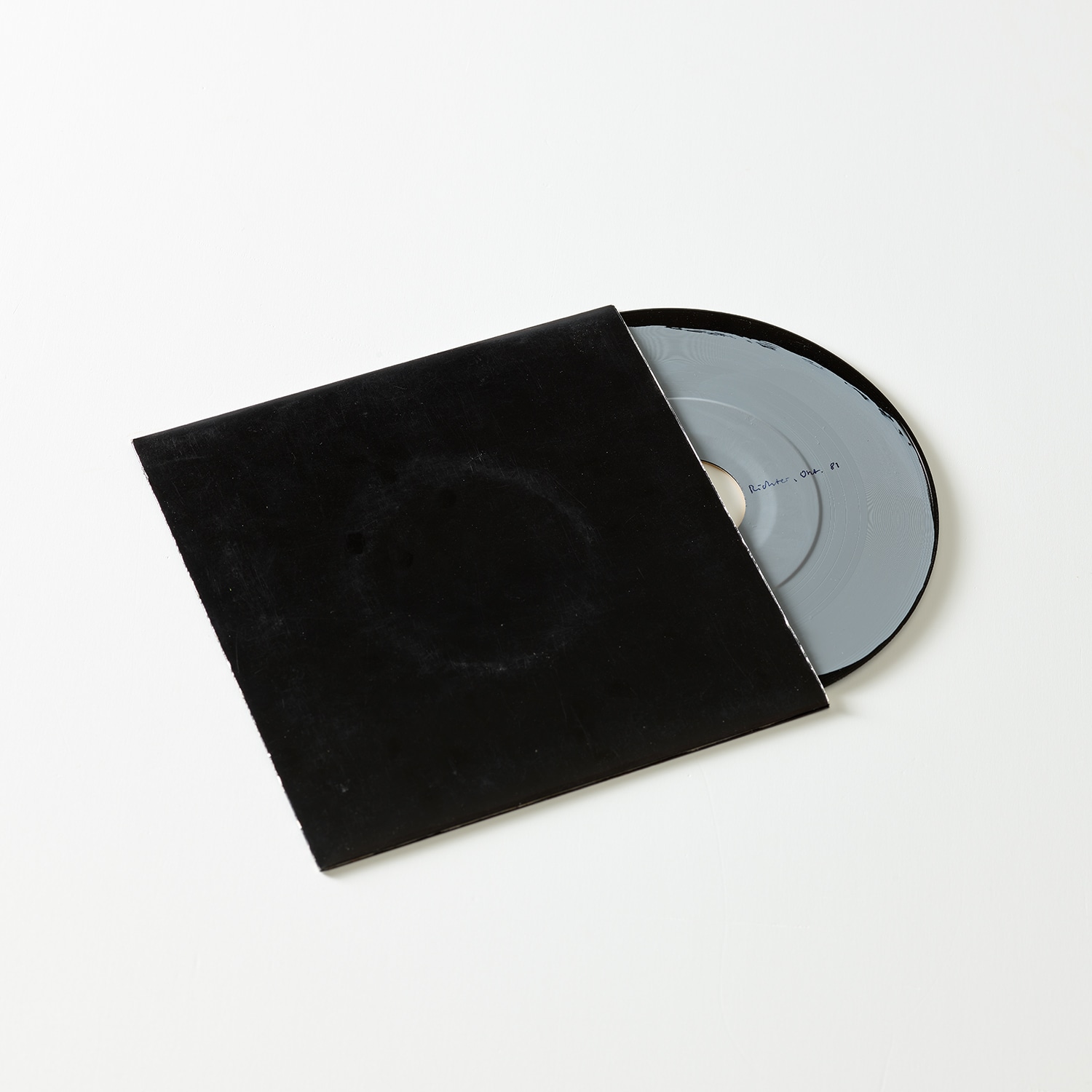





52
Gerhard Richter and Isa Genzken
Tri-Star (B. 57)
1981
Phonograph record by Isa Genzken, featuring noises made by a Tri-Star aeroplane motor, one side painted by Gerhard Richter with grey nitro lacquer, with the original black cardboard record sleeve.
17.5 cm (6 7/8 in.) diameter
Signed and dated in black ink on the grey nitro lacquer and numbered 27/75 in black ink on the yellow label affixed to the reverse, co-published by Isa Genzken and Gerhard Richter, Düsseldorf, unframed.